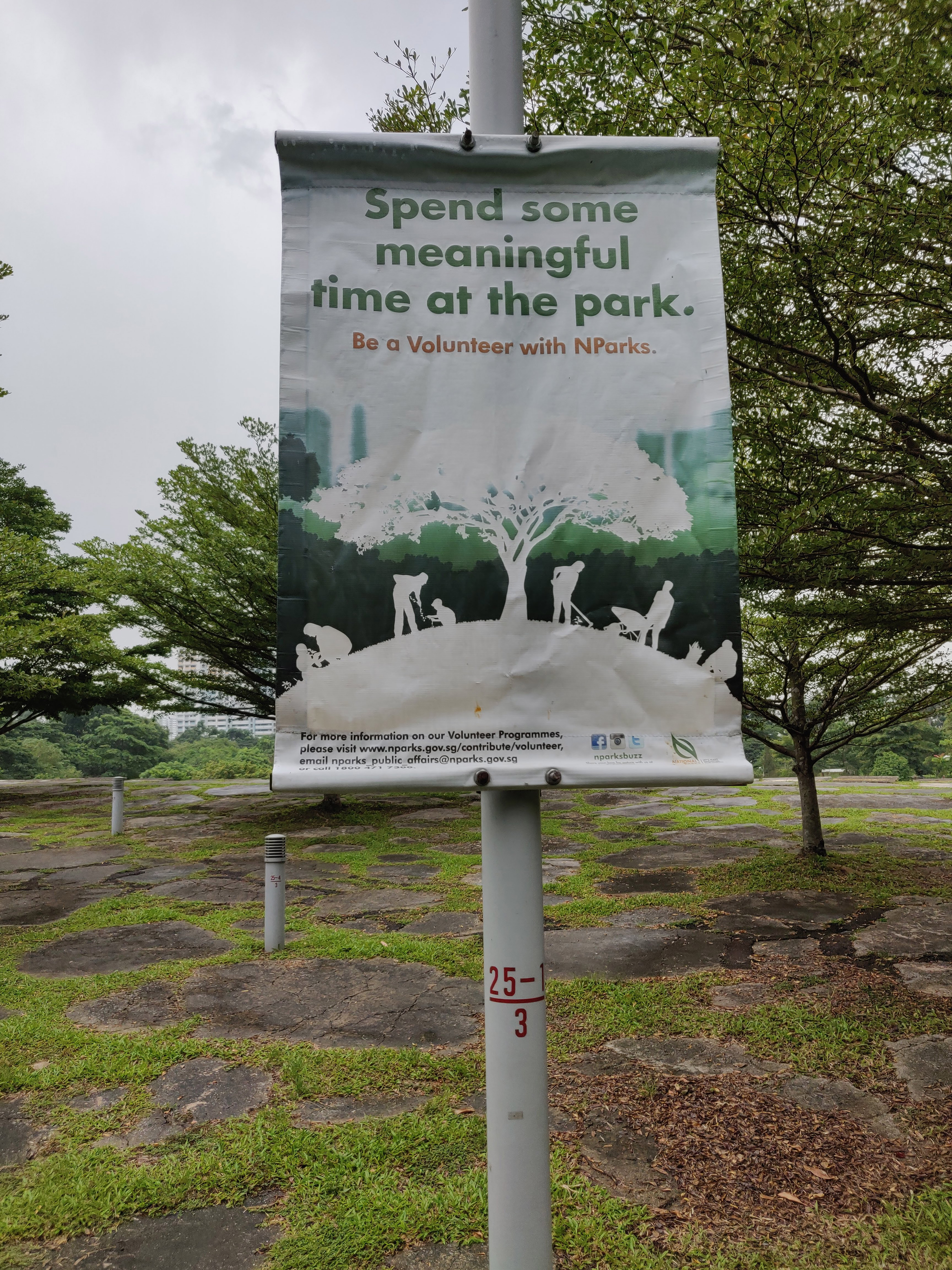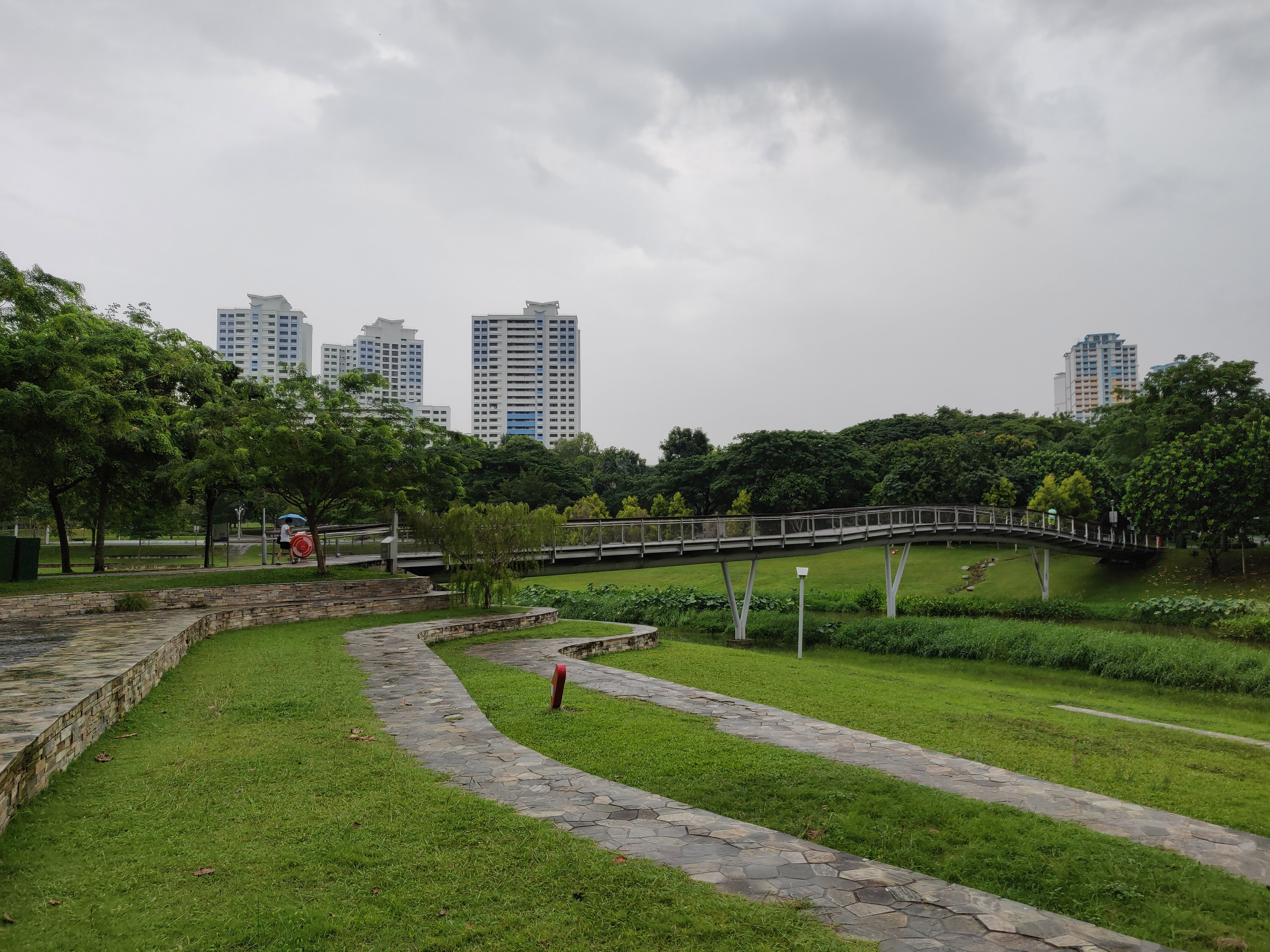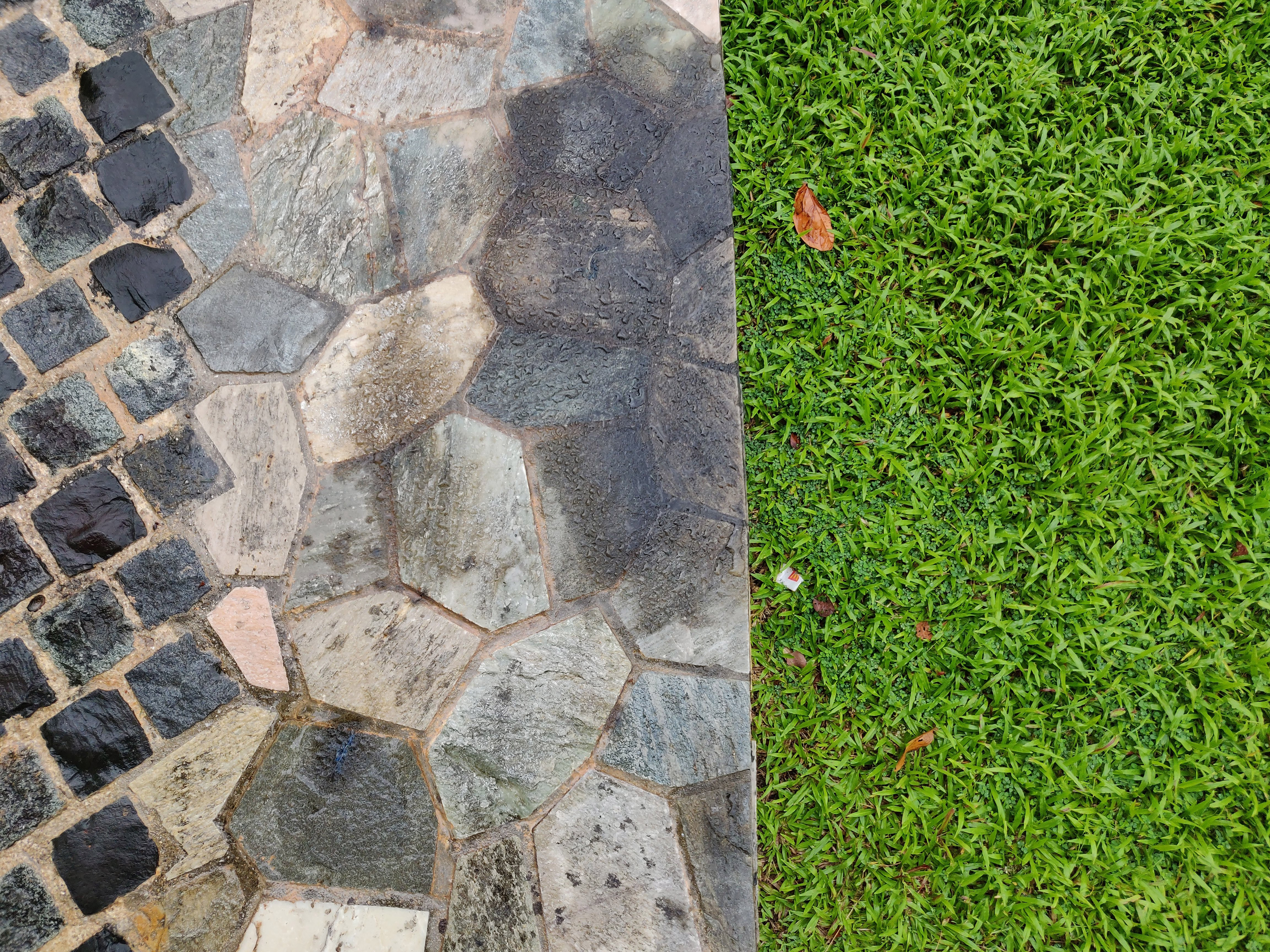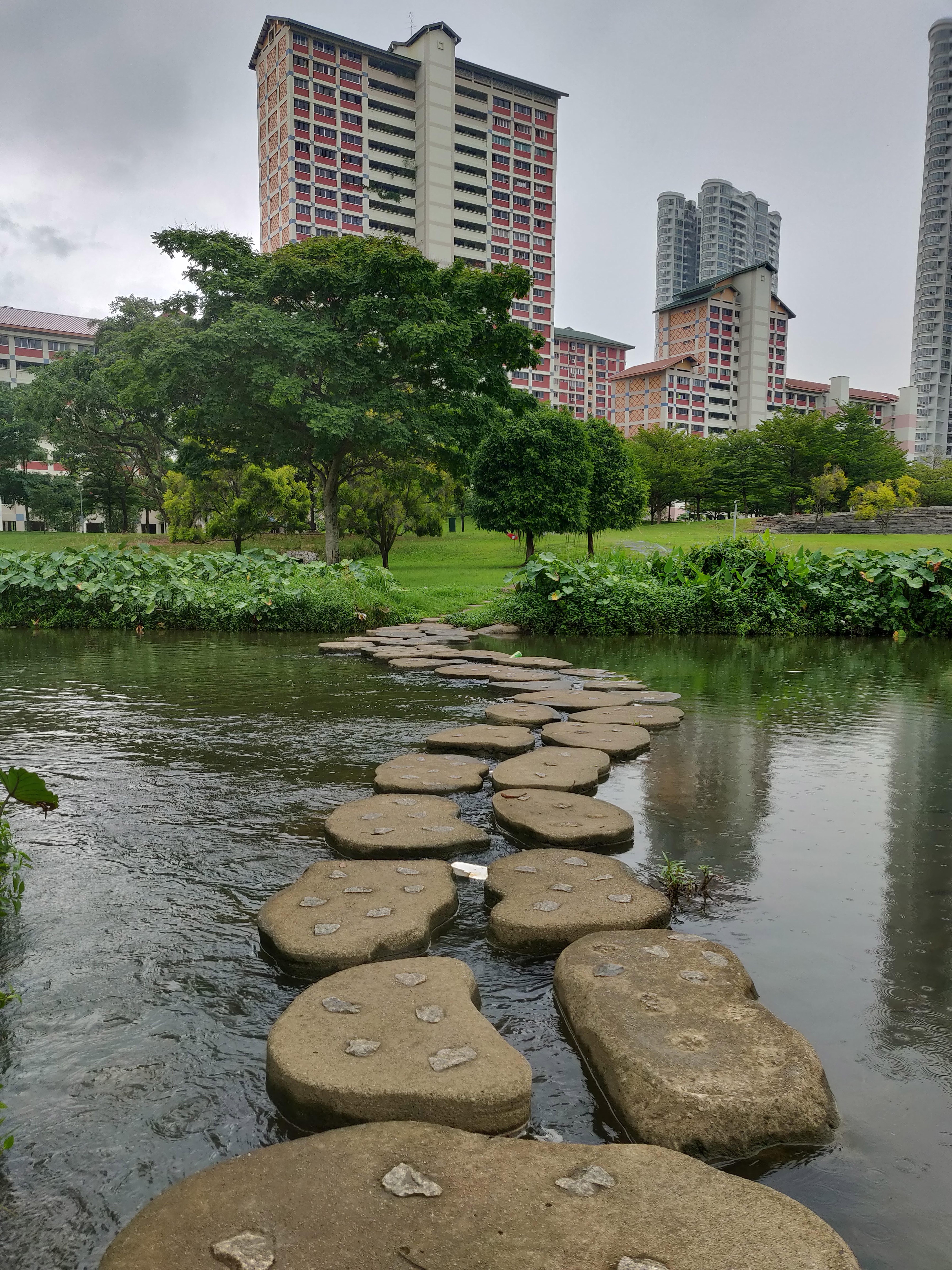“Bishan park is a treat to the eyes and souls, it is a river-based park with lush green in the midst of high-density urban areas. The area has been revitalized to transform a concrete drainage channel into a vibrant public space. The transformation focuses not only on the natural resources but also on the community connections; community of people, community of plants and animals. The Kallang river meanders through the park creating a different aura in different zones with fluctuating water levels and with a variety of plants and trees. From the small-scale restaurant and playground to even smaller scale street accessories create an inviting environment for people of all age groups and communities amidst a prolific landscape.”

Location and Background
Singapore has made a mark by morphing into a modernized city-state through innovation and adaptation to green technology. To become sustainable and environment-friendly, the city has applied various strategies, one of which is to achieve water supply self-sufficiency. Singapore Public Utilities Board (PUB) had approached landscape architectural practice ‘Atelier Dreiseitl’ to redesign the Kallang river park in a more eco-friendly way. The project is part of the Active, Beautiful, Clean Waters Programme (ABC Waters), a long-term initiative to rethink waterbodies beyond their functions of drainage and water supply.

The meeting point of two new towns named Bishan and Ang Mo Kio emerged as the new neighborhood park which accommodates the first three kilometers of the Kallang river. The park was nothing more than an unused open space for the city but the landscape designers’ eyes saw the potential of turning it into a vibrant public space within the framework of the PUB masterplan. That vision gave birth to today’s meandering creek from the charmless canal and has been entertaining the local residents as well as the international tourists.

Unlike the other modern and mechanized green infrastructures, this park stands out as a natural ecological infrastructure which incorporates flood management, biodiversity and recreation. The greeneries here are not just to see through eyes, rather to have an emotional connection.

“This is a place to take your shoes off, and get closer to water and nature.” [1]
One of the key consultants Ramboll mentions in their website to describe the park. During a work trip in Singapore in 2018, I got the opportunity to explore the city in many unconventional ways. And definitely ‘Bishan Park’ was an unusual pick over the other famous and popular tourist parks, but its unique way of achieving sustainability and the story of its transformation compelled me to visit the park.
Sustainability
A sustainable urban design is never only about the architectural details, it is rather keeping the whole project in a process of sustaining on its own economically, environmentally and socially. Although Singapore is known for its grandly innovative and modern technologies, Bishan park is approached in a more humble way to achieve nature friendly sustainable urban design.
This particular project ensures economical sustainability through adding small functions like restaurants, spa and cafe. On the other hand, the intricately designed landscape ensures ecological sustainability through natural water edge, plantations which allow natural purification and creates an environment which allows biodiversity. The heart of the park is the river which is free to flow following its natural direction all through the year.

The 2016 ASLA awards jury describes the project’s highlight as such,
“The fact that they found a way to deal with flooding is impressive. The hydrological and ecological pulses beat through this. Wildlife and nature have been given precedence. Even in a heavy flood downpour, the river fills slowly providing ample time for people to comfortably move away from the water to higher ground. A comprehensive river monitoring and warning system with water level sensors, warning lights, sirens and audio announcements are in place to provide early warning in the event of impending heavy rain or rising water levels.” [2]
The naturalized river has been the key to increase biodiversity, in fact, there was no need to introduce new wildlife once the presence of the river was open to all.
Above all, as the park allows a much needed breathing space for the community and the city, it is a bright example of achieving social sustainability and maintenance through social responsiveness. As I walk in the park and see children picking up trash to the bins which is a result of the ‘self-policing’ attitude of the residents. I feel there is a sense of ownership of this place among the community which has embedded the idea of preservation of nature to these children. There are self-organized groups of people who volunteer to keep the park clean and encourage others to spend impactful time in the park.

Tools of transformation
The designers had delicately picked some tools of transformation to redesign the park. Apart from the ecological elements, few urban design components were also injected carefully; be it the pathways or the sitting arrangements or even the porous ground textures all of it were designed to complement nature considering user friendliness. For example, there are various types of sitting arrangements; if anybody wants to spend some alone time lying under a tree, he can find a quiet corner, or if a family wants to have a picnic they can also find group sitting arrangements in the lawn.



To keep up with the changing nature of the river flow, there is a sensitive placement of riverside gallery sittings and benches on the riverside sloping edge. To ensure safety, there are signages all around depicting the flood level and danger. To attract the visitors towards the park, three playgrounds, restaurants, a new vantage point constructed using the recycled walls of the old concrete channel were incorporated in the new design.



The new design also broke the monotony of a paved path by adding various textures and materials which complement the natural surroundings. In some cases, water stones are used in the river through which people can cross the river by walking during the dry season. All these elements are binded cohesively in the design and each of them plays a vital role for the overall transformation.
Conclusion
Among the many modern and busy tourist gardens and parks in Singapore, Bishan park sparks a drop of silence for nature lovers and that silence keeps resonating in its surrounding communities of plants, animals and people.
“Only architecture that considers the human scale and interaction is successful architecture.” [3]
I have always admired how this quote by urbanist Jan Gehl puts emphasis on the need of human connection and interaction through architecture. In the vast spectrum of architecture, even a small urban design project can reflect on this ideology, which Bishan park has certainly done. The 62 hectares park has managed to keep a humble presence with intelligent positioning of interactive elements while remaining in the natural landscape.[4]

One of my professors at architecture school once said that the best urban design projects are those where you end up spending more time than you anticipated. And that is exactly what happened to me at Bishan park. During my work trip in Singapore, I decided to visit this park just for a walk, and I ended up roaming around the greenery and spending some quality time with nature for longer than I planned. I could not track time from the sunny morning to the rainy afternoon. The soothing greeneries and the calming river was blooming its beauty with time and that experience has left me with a permanent impression of serenity. The playfulness of spaces not only provides recreation for the users, it has succeeded to establish the park as an exemplary ecological infrastructure which increases civic responsibilities towards water through creating connection with the river.
References
[1] Bishan-Ang Mo Kio Park. Retrieved 21 October 2020, from https://ramboll.com/projects/singapore/bishan-park
[2] Bishan-Ang Mo Kio Park | 2016 ASLA Professional Awards. (2016). Retrieved 22 October 2020, from https://www.asla.org/2016awards/169669.html
[3] Future, R. 10 Most Memorable Quotes by Jan Gehl – The Humanist Architect – Rethinking The Future. Retrieved 9 November 2020, from https://www.re-thinkingthefuture.com/know-your-architects/a343-10-most-memorable-quotes-by-jan-gehl-the-humanist-architect/#:~:text=10%20Most%20Memorable%20Quotes%20by%20Jan%20Gehl%20%E2%80%93%20The%20Humanist%20Architect&text=Only%20architecture%20that%20considers%20the,something%20happens%20because%20something%20happens.
[4] Bishan Park by Atelier Dreiseitl. (2012). Retrieved 21 October 2020, from https://www.australiandesignreview.com/architecture/bishan-park/
Published in: CITY OBSERVER- December 2020| Volume 6 | Issue 2 (Page 24-34)